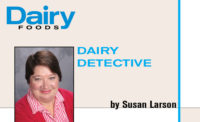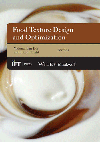A Royal Breakfast Needs Dairy Protein
There’s an old saying, “Eat breakfast like a king, lunch like a prince and dinner like a pauper.” Emerging research confirms that a hearty breakfast with ample protein may indeed be the most important meal of the day, but many Americans either skip breakfast or eat a hasty breakfast that’s low in protein. Data from the National Health and Nutrition Examination Survey indicate that Americans typically consume 15% of their daily protein at breakfast.
There’s an old saying, “Eat breakfast like a king, lunch like a prince and dinner like a pauper.” Emerging research confirms that a hearty breakfast with ample protein may indeed be the most important meal of the day, but many Americans either skip breakfast or eat a hasty breakfast that’s low in protein. Data from the National Health and Nutrition Examination Survey indicate that Americans typically consume 15% of their daily protein at breakfast. A balanced breakfast should include high-quality protein in order to start the day off right, fuel morning exercise and promote satiety. Dairy proteins are ideal ingredients for a wide variety of breakfast items.
Eating a healthy breakfast sets the tone for the day. New research reveals actual physiological differences after consumption of a protein-rich breakfast versus a carbohydrate-rich one. A number of studies suggest that consuming protein at breakfast promotes satiety, lean body mass preservation, weight management and nitrogen balance. One recent clinical trial by M.M. Mamerow (see References) compared two diets: one with even protein distribution (30 grams at breakfast, 30 grams at lunch and 30 grams at dinner) versus one with skewed protein distribution (10 grams, 15 grams, 65 grams). Initial data indicate that muscle protein synthesis was 25% greater in participants who consumed protein evenly throughout the day. Indices of satiety were also greater in the group who consumed protein evenly across the three meals.
Adequate protein at breakfast is important for all age groups, but especially seniors who may be less efficient at protein utilization and require slightly higher doses of protein at each meal for muscle synthesis, according to D. Paddon-Jones. More than 90% of seniors age 60 and older eat breakfast, but this group may have diminished appetites and difficulty with chewing or swallowing. For some seniors, liquid meal replacements or yogurt-based smoothies may be helpful to boost protein intake.
Dairy breakfast opportunities
Typical breakfast foods, such as cereal, toast, pastries, waffles, pancakes and juice, are low in protein. With more than 25% of adults eating breakfast away from home, opportunities abound for higher-protein convenience foods that can be eaten on the go. Let’s explore some breakfast options, including some new products from around the world.
Dairy-based smoothies. Smoothies often combine yogurt and fruit. The addition of either whey protein or milk protein can boost protein content of ready-to-drink (RTD) products. Smoothies are available in a variety of formats, including shelf-stable, refrigerated and frozen. Starbucks now offers three flavors of Vivanno smoothie, each providing at least 15 grams of protein from milk and whey.
Grain-based breakfast products. Whey protein is an ideal addition to a variety of grain-based products, including nutrition bars, oatmeal, waffles, bagels and pancake mixes. New muesli introductions are prolific on the international scene in 2011. Dannon recently introduced a yogurt-muesli combo in Turkey.
Breakfast sandwiches. Cheese is an ideal component for breakfast sandwiches, which may also contain meat or dairy protein to achieve 20 or more grams of protein. Carulla, a Colombian company, features Pandequeso cheese breads for breakfast. The first three ingredients are cheese, cheese products and whole milk.
Coffee-based beverages. Milk and whey proteins can be incorporated into coffee-based beverages. Hydrolyzed whey proteins offer advantages of increased heat stability in coffee-based RTD beverages, and their slightly bitter notes work well in these flavor profiles. California-based Bolthouse Farms sells Perfectly Protein mocha cappuccino with low-fat milk and whey protein isolate.
Yogurt. Whey combines well with yogurt, a popular breakfast food throughout the world. Greek and other higher-protein yogurts are gaining in popularity. Germany-based H. & J. Brüggen introduced muesli with yogurt flakes and red fruit. Yogurt powder is used as an ingredient.
Because breakfast typically is eaten after an overnight fast, it may be the ideal time to replenish the body’s amino acid and protein reserves. Sample breakfast menus, each featuring 20 grams of protein, are available at www.Wheyforyou.org/Recipe.aspx. The U.S. Dairy Export Council has a monograph on whey protein and breakfast, available at www.innovatewithdairy.com, which highlights some of the newer market and nutrition research on the benefits of breakfast with dairy protein.
Sharon Gerdes is a food industry consultant who works with the U.S. Manufacturing & Ingredient Marketing program at the U.S. Dairy Export Council to promote the use of dairy ingredients in food and beverage formulations.
References
“What We Eat in America,” National Health and Nutrition Examination Survey, 2007-2008
Mamerow MM, et. al. “Protein Distribution Needs for Optimal Meal Response.” The FASEB Journal 2011:25:983.7
Paddon-Jones, D. “Dietary protein recommendations and the prevention of sarcopenia.” Current Opinion In Clinical Nutrition and Metabolic Care, 2009
Layman DK. “Dietary Guidelines should reflect new understanding about adult protein needs.” Nutrition & Metabolism 2009
There’s an old saying, “Eat breakfast like a king, lunch like a prince and dinner like a pauper.” Emerging research confirms that a hearty breakfast with ample protein may indeed be the most important meal of the day, but many Americans either skip breakfast or eat a hasty breakfast that’s low in protein. Data from the National Health and Nutrition Examination Survey indicate that Americans typically consume 15% of their daily protein at breakfast. A balanced breakfast should include high-quality protein in order to start the day off right, fuel morning exercise and promote satiety. Dairy proteins are ideal ingredients for a wide variety of breakfast items.
Eating a healthy breakfast sets the tone for the day. New research reveals actual physiological differences after consumption of a protein-rich breakfast versus a carbohydrate-rich one. A number of studies suggest that consuming protein at breakfast promotes satiety, lean body mass preservation, weight management and nitrogen balance. One recent clinical trial by M.M. Mamerow (see References) compared two diets: one with even protein distribution (30 grams at breakfast, 30 grams at lunch and 30 grams at dinner) versus one with skewed protein distribution (10 grams, 15 grams, 65 grams). Initial data indicate that muscle protein synthesis was 25% greater in participants who consumed protein evenly throughout the day. Indices of satiety were also greater in the group who consumed protein evenly across the three meals.
Adequate protein at breakfast is important for all age groups, but especially seniors who may be less efficient at protein utilization and require slightly higher doses of protein at each meal for muscle synthesis, according to D. Paddon-Jones. More than 90% of seniors age 60 and older eat breakfast, but this group may have diminished appetites and difficulty with chewing or swallowing. For some seniors, liquid meal replacements or yogurt-based smoothies may be helpful to boost protein intake.
Dairy breakfast opportunities
Typical breakfast foods, such as cereal, toast, pastries, waffles, pancakes and juice, are low in protein. With more than 25% of adults eating breakfast away from home, opportunities abound for higher-protein convenience foods that can be eaten on the go. Let’s explore some breakfast options, including some new products from around the world.
Dairy-based smoothies. Smoothies often combine yogurt and fruit. The addition of either whey protein or milk protein can boost protein content of ready-to-drink (RTD) products. Smoothies are available in a variety of formats, including shelf-stable, refrigerated and frozen. Starbucks now offers three flavors of Vivanno smoothie, each providing at least 15 grams of protein from milk and whey.
Grain-based breakfast products. Whey protein is an ideal addition to a variety of grain-based products, including nutrition bars, oatmeal, waffles, bagels and pancake mixes. New muesli introductions are prolific on the international scene in 2011. Dannon recently introduced a yogurt-muesli combo in Turkey.
Breakfast sandwiches. Cheese is an ideal component for breakfast sandwiches, which may also contain meat or dairy protein to achieve 20 or more grams of protein. Carulla, a Colombian company, features Pandequeso cheese breads for breakfast. The first three ingredients are cheese, cheese products and whole milk.
Coffee-based beverages. Milk and whey proteins can be incorporated into coffee-based beverages. Hydrolyzed whey proteins offer advantages of increased heat stability in coffee-based RTD beverages, and their slightly bitter notes work well in these flavor profiles. California-based Bolthouse Farms sells Perfectly Protein mocha cappuccino with low-fat milk and whey protein isolate.
Yogurt. Whey combines well with yogurt, a popular breakfast food throughout the world. Greek and other higher-protein yogurts are gaining in popularity. Germany-based H. & J. Brüggen introduced muesli with yogurt flakes and red fruit. Yogurt powder is used as an ingredient.
Because breakfast typically is eaten after an overnight fast, it may be the ideal time to replenish the body’s amino acid and protein reserves. Sample breakfast menus, each featuring 20 grams of protein, are available at www.Wheyforyou.org/Recipe.aspx. The U.S. Dairy Export Council has a monograph on whey protein and breakfast, available at www.innovatewithdairy.com, which highlights some of the newer market and nutrition research on the benefits of breakfast with dairy protein.
Sharon Gerdes is a food industry consultant who works with the U.S. Manufacturing & Ingredient Marketing program at the U.S. Dairy Export Council to promote the use of dairy ingredients in food and beverage formulations.
References
“What We Eat in America,” National Health and Nutrition Examination Survey, 2007-2008
Mamerow MM, et. al. “Protein Distribution Needs for Optimal Meal Response.” The FASEB Journal 2011:25:983.7
Paddon-Jones, D. “Dietary protein recommendations and the prevention of sarcopenia.” Current Opinion In Clinical Nutrition and Metabolic Care, 2009
Layman DK. “Dietary Guidelines should reflect new understanding about adult protein needs.” Nutrition & Metabolism 2009
Looking for a reprint of this article?
From high-res PDFs to custom plaques, order your copy today!







